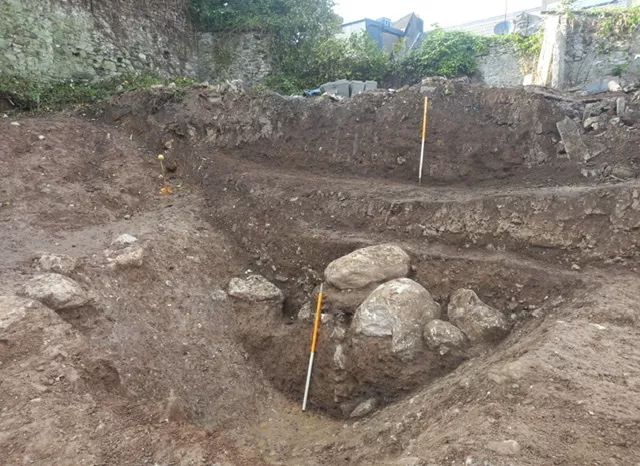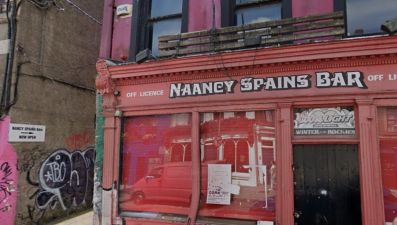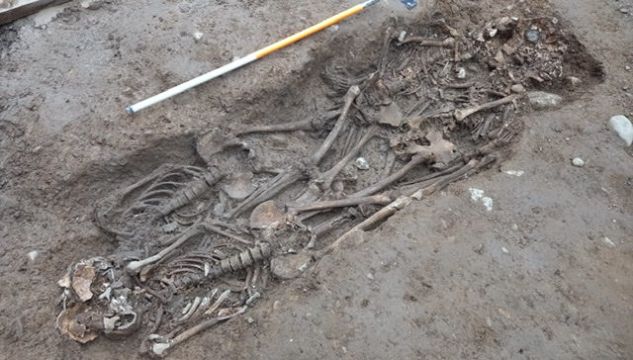Men whose skeletal remains dating back centuries were found in a shallow grave under a pub in Cork city "met a violent and gruesome end," archaeologists have determined.
The first skeletal remains were unearthed at the site of Nancy Spain's pub on October 7th, 2021, with the remains of five other males found at the site on Barrack Street in the days that followed. Four were buried together in a mass grave.
Nancy Spain's pub, which closed around 20 years ago, was situated in a historic area. It was positioned just 500 metres from a 17th century gallows and about 200 metres from the 17th century Elizabeth Fort.

Archaeologists say that skeletal remains of four men found underneath Nancy Spain's were uncovered within a mass burial pit and "had evidently met a violent end." The men were aged between 18 and 25 and had their hands tied behind their backs. They were placed head to toe in the pit.
Cork City Council said fragments of bone taken from two of the skeletons to facilitate radiocarbon dating have returned dates from the period between 1447 and 1636.
"It is hoped that ongoing post-excavation work will provide greater clarity and accuracy on burial date of the revealed individuals," the council said in a statement.
Niamh Daly, the osteo-archaeologist employed at the site, said the context of the burials of four men and the way they were placed in the burial pit indicated that they were not treated in a respectful manner.
"In fact, it was evident that all four individuals were buried in a manner which suggests that the hands/wrists were bound behind the backs, and it is likely that the feet/ankles were also bound".

The estimated sex, age and the nature and position of burial points to a military connection for the revealed remains.
The period of death indicated by the radiocarbon dating was a turbulent and violent time in Irish history, with Munster and Cork the focus of several significant events. Such events included the first Desmond Rebellion (1569-1573), the second Desmond Rebellion (1579-1583), the Nine Years War (1593-1603) which culminated with the Battle of Kinsale, and a revolt in Cork City in 1603.
This revolt followed the death of Elizabeth I and saw the citizens of Cork uprising against English rule and even saw the precursor to Elizabeth Fort, located only 80 metres from the burial site, burnt down. The revolt continued for a month before it was quelled by English reinforcements.
Though it is unknown which event led to the deaths of the six individuals discovered in Barrack Street, city archaeologist Ciara Brett said it was certain they "met a violent and gruesome end."







